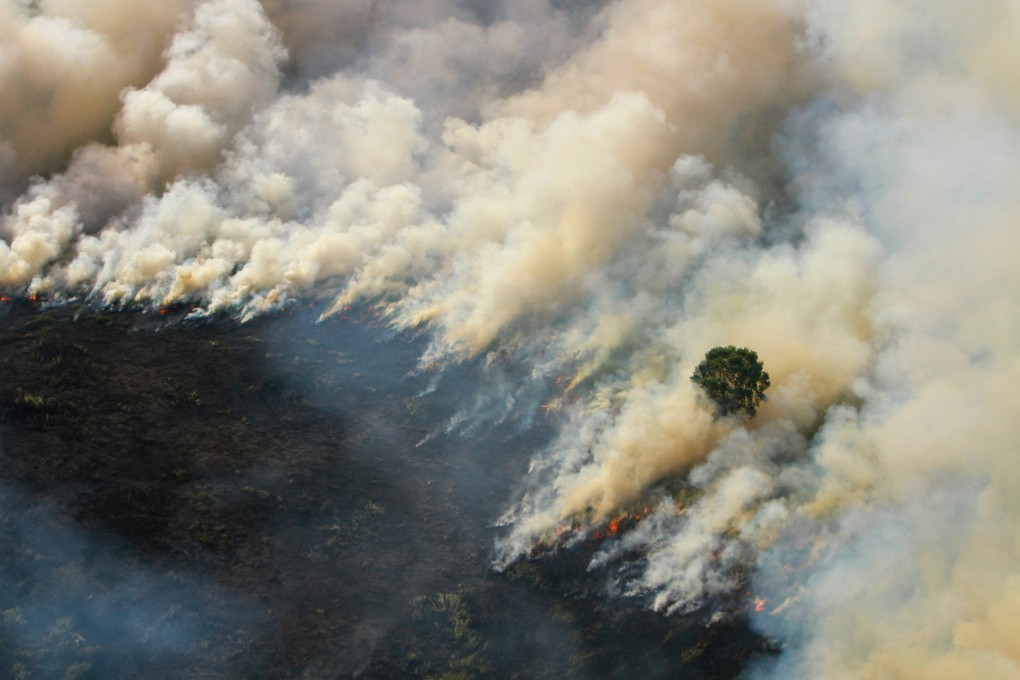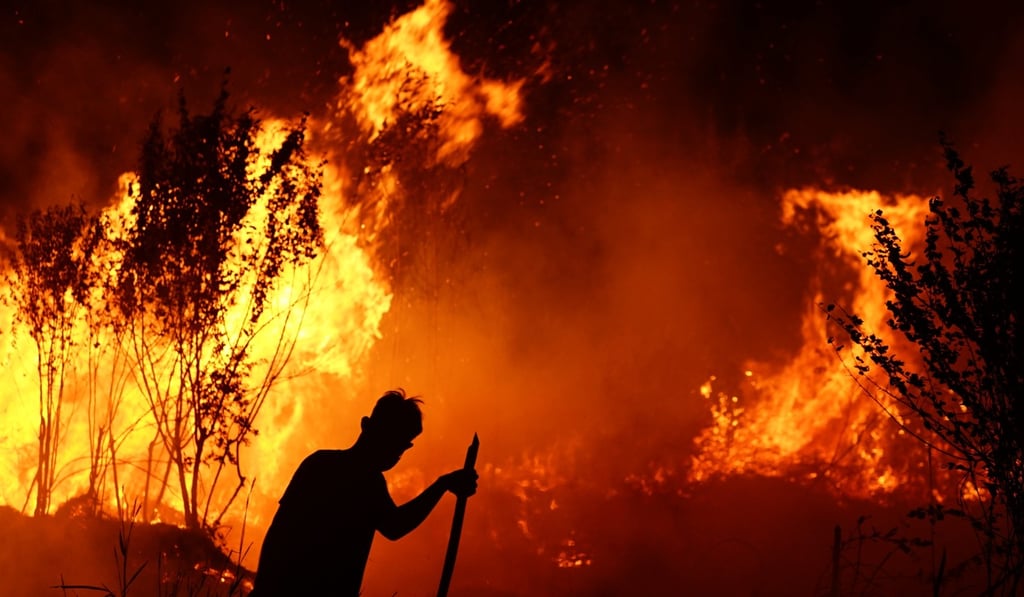Malaysia mad at Indonesia over smog from massive forest fires
- Residents of Kuala Lumpur say the sky has become increasingly smoggy in recent days as smoke has spread across the Strait of Malacca
- More than 14 megatonnes of carbon dioxide were discharged from the blazes in Indonesia on September 5 alone

More than 14 megatonnes of carbon dioxide were discharged from the blazes on September 5, more than triple the average on this day over the previous 15 years, according to satellite data from the Copernicus Atmosphere Monitoring Service.

Although the dramatic increase is too short to determine a trend, the Malaysian government will reportedly send a letter to Jakarta demanding urgent action to extinguish the blazes.
Residents of Kuala Lumpur say the sky has become increasingly smoggy in recent days as the smoke has spread across the Strait of Malacca.
“Today is almost unbearable,” said Thomas Smith, an expert in peat fires from the London School of Economics, who is in the Malaysian capital for a research trip. “The smell is very distinct, like a peaty whisky.”